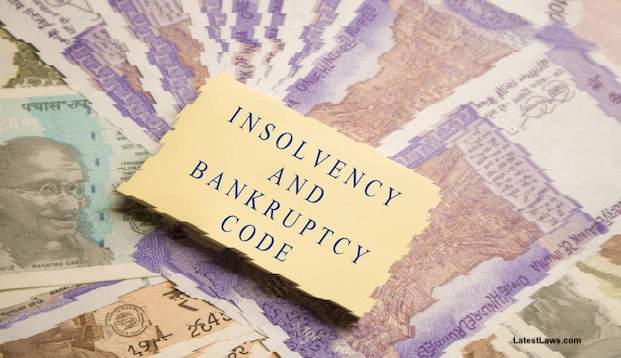The authors of the article are Mr. Ketan Mukhija, Partner, Link Legal and Ms. Ishika Rajoria, Intern, Link Legal.
INTRODUCTION
The Insolvency and Bankruptcy Code, 2016 (‘IBC’) enables financial creditors and operational creditors of a corporate debtor to initiate the corporate insolvency resolution process (‘CIRP’), under Section 7 and Section 9 of the IBC, respectively.
Supreme Court (‘SC’), recently in case of Vidarbha Industries Power Limited v. Axis Bank Limited, [Civil Appeal No. 4633 of 2021], has examined the issue, whether NCLT has discretionary or a mandatory power to admit an application for initiation of the CIRP proceedings by a financial creditor under Section 7(5)(a) of the IBC.
Vidarbha Industries Power Limited (‘VIPL’), is engaged in production of electricity for which tariff is regulated by the Maharashtra Energy Regulatory Commission (‘MERC’) and the Appellate Tribunal for Electricity (referred herein as ‘APTEL’). Axis Bank Limited (‘Respondent’), as a financial creditor filed an application under Section 7 of the IBC to initiate CIRP against VIPL (‘Appellant/ Corporate Debtor’). The National Company Law Tribunal in Mumbai (‘NCLT’) denied the Appellant’s miscellaneous motion for a stay of the proceedings under Section 7 of the IBC vide its order dated January 29, 2021 (‘NCLT Order’).
The NCLT ruled that, in an application under Section 7 of the IBC, the NCLT is required only to see whether there is an existence of a debt and whether the corporate debtor has fallen behind on payments. The NCLT further held that, IBC does not apply to corporate debtors who were unable to service their debts or who committed defaults for other reasons.
In pursuance to same, the National Company Law Appellate Tribunal (‘NCLAT’) upheld the NCLT Order vide its order dated March 2, 2021 (‘NCLAT Order’).
Further, under Section 62 of the IBC, the Appellant filed this appeal against the NCLAT Order to the Supreme Court.
SUPREME COURT RULING
“Section 7(5)(a) is directory, as opposed to Section 9(5)(a), which is mandatory”
The Hon’ble Supreme Court vide order dated July 12, 2022 (“SC Order”), allowed the appeal, and set aside the NCLAT Order. Supreme Court delt with the issue, that whether NCLT has the discretion to accept or reject an application made by a financial creditor under Section 7(5)(a).
It was noted that IBC's goal is to firstly attempt to revive the company rather than penalizing the solvent company for temporarily failing on their financial debt.
The Supreme Court further observed that existence of a financial debt and a default in payment only gives the financial creditor the right to apply for initiation of CIRP, and that the NCLT is required to further apply its mind to relevant factors before deciding on the application.
The Supreme Court on issue of NCLT’s mandatory or discretionary power, noted that in Section 7, typically, the word “may” has a directive meaning while the phrase “may admit” confers discretion to admit. However, the term “must” implies a rule that must be followed. According to the Supreme Court, Section 7(5)(a) of the IBC is not ambiguous, and there was no compelling cause to deviate from the standard of literal construction in this case.
It was observed that the legislature, in its wisdom, decided to use the word “may” in Section 7 (5)(a) of the IBC, in contrast to the word “must” in a provision of Section 9(5)(a) of the IBC that is otherwise almost identical. Thus, it was apparent that the legislature intended Section 7(5)(a) of the IBC to be optional while Section 9(5)(a) of the IBC was intended to be mandatory.
“Expedience test”
Further, Supreme Court held that, in case of an application filled by a financial creditor, the NCLT might consider the “expedience of initiation of CIRP” while taking into account all relevant facts and circumstances, including the corporate debtor’s overall financial health and viability, and may, using its discretion, not admitting financial creditor’s application. In contrast, a CIRP application submitted by an operational creditor under Section 9(2) of IBC mandatorily required to be admitted if the application is complete in all respects and in compliance of the requisites of the IBC.
In this regard, the Court reasoned that, given their inherent distinctions, the legislature consciously distinguished between financial creditor’s and operational creditor’s, and it noted that the impact of the non-payment of accepted dues may be much more severe for an operational creditor than for a financial creditor. Additionally, it said that the IBC does not tolerate deceit or willful neglect to pay an operational creditor’s debts.
The Court further noted that while it is undeniable that a corporate debtor who is in insolvency should be resolved expeditiously, following the timelines in the IBC and without any extraneous matter in the way, but that “the viability and overall financial health of the corporate debtor are not extraneous matters.”
Specifically to the instant Vidharbha facts, the bench noted that while disagreements between the corporate debtor and the electricity regulator or the recipient of electricity may not be particularly important, an APTEL award in the corporate debtor’s favor could not be completely disregarded by the NCLT/NCLAT when it is asserted that the corporate debtor is capable of realizing an amount under the terms of the award that is significantly greater than the financial creditor’s claim.
It was held that the financial creditor only had the right to request the initiation of CIRP since there was a financial debt and a default in paying it. The NCLT is required to “apply its mind to relevant factors” including the feasibility of initiation of CIRP, in the instant case, against an electricity generating company (i.e., VIPL) operated under statutory control, the impact of MERC’s appeal pending before the Supreme Court, the order of APTEL and overall financial health and viability of the corporate debtor under its existing management.
The Supreme Court held that Section 7(5)(a) of the IBC gives the NCLT discretionary power to admit an application of a financial creditor under IBC. It was noted that it is not the purpose of the IBC “to penalize solvent companies, temporarily defaulting in repayment of its financial debts, by initiation of CIRP”. The Supreme Court, added a note for NCLT’s to be cautious while observing that such discretionary power cannot be exercised arbitrarily or capriciously. The NCLT would have to consider the grounds made out by the corporate debtor against admission, on their own merits.
Accordingly, the Hon’ble Supreme Court directed the NCLT to reconsider the application of the Appellant for stay of further proceedings on merits in accordance with law.
CONCLUSION
The decision of the Supreme Court in Vidarbha has become a landmark judgment and made a way for fresh defense that can be availed by the corporate debtor against initiation of insolvency proceedings against it by a financial creditor. Further, the judgment upheld that Section 9(5)(a) of the IBC is mandatory provision whereas Section 7(5)(a) of the IBC is discretionary one. However, an anomaly may arise before NCLT when insolvency application under both provisions; that is, Sections 7 and 9 of the IBC come forth, as NCLT has to keep the Section 7 application in abeyance, in parallel to which similar same discretion might not be exercisable while entertaining an application in terms of Section 9, IBC.
Picture Source :




























